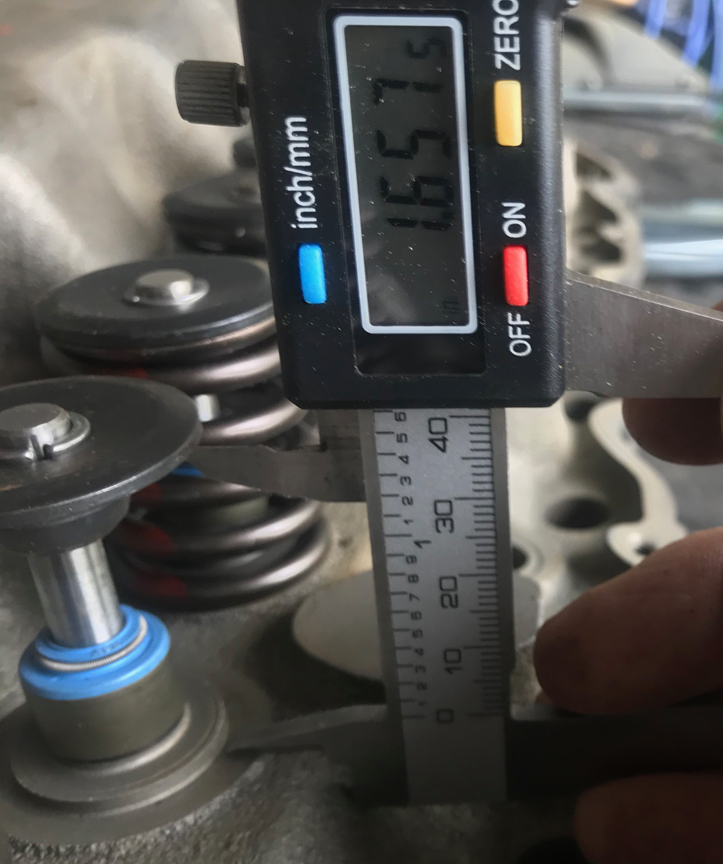62Ranchero200
Famous Member
Greetings Ford Six Fans,
'74 250, CI/VI aluminum head, milled down to 47 cc chambers and with stage 1 porting, in the process of having new valve guides installed, without the steel spring locators that originally came pressed onto the guides, to switch to dual valve springs. Still running the valves that came with the aluminum head (manufactured in 2013/2014). Although at present installing a 280/280/110 hydraulic cam (.512 lift @ 1.6:1), according to my machinist, after all the work on the head is done, I should be able to run at least .550 lift (at the valve with 1.6:1), maybe even .575. Schneider has a couple of solid lifter cams in this range.
As I understand it, to run any more lift than that, I would have to install longer valves (for retainer to seal clearance and more travel before coil bind) ... which would probably also require different springs and perhaps other valve train mods as well, since the longer valves would alter valve train geometry.
Questions:
What ultimately limits possible valve lift? Piston to valve clearance (my pistons have 15 cc dishes) ? Valvetrain components being too tall and hitting the underside of the top of the valve cover? Is there a limit on lift with solid lifters in a small six? I know it's not possible to install roller lifters in a small six without extensive custom machine work. I don't intend to go that far in the foreseeable future.
With the aluminum head and its large ports and valves, would more lift always be beneficial to mid-range torque and high-end HP, or can you reach a point of diminishing returns?
If relevant, my machinist says that he would recommend a rev limit of 6,500 RPM on this motor, unless I'm willing to tear it down to replace the "early" forged 300 rods with stronger custom rods.
Thanks
Bob
'74 250, CI/VI aluminum head, milled down to 47 cc chambers and with stage 1 porting, in the process of having new valve guides installed, without the steel spring locators that originally came pressed onto the guides, to switch to dual valve springs. Still running the valves that came with the aluminum head (manufactured in 2013/2014). Although at present installing a 280/280/110 hydraulic cam (.512 lift @ 1.6:1), according to my machinist, after all the work on the head is done, I should be able to run at least .550 lift (at the valve with 1.6:1), maybe even .575. Schneider has a couple of solid lifter cams in this range.
As I understand it, to run any more lift than that, I would have to install longer valves (for retainer to seal clearance and more travel before coil bind) ... which would probably also require different springs and perhaps other valve train mods as well, since the longer valves would alter valve train geometry.
Questions:
What ultimately limits possible valve lift? Piston to valve clearance (my pistons have 15 cc dishes) ? Valvetrain components being too tall and hitting the underside of the top of the valve cover? Is there a limit on lift with solid lifters in a small six? I know it's not possible to install roller lifters in a small six without extensive custom machine work. I don't intend to go that far in the foreseeable future.
With the aluminum head and its large ports and valves, would more lift always be beneficial to mid-range torque and high-end HP, or can you reach a point of diminishing returns?
If relevant, my machinist says that he would recommend a rev limit of 6,500 RPM on this motor, unless I'm willing to tear it down to replace the "early" forged 300 rods with stronger custom rods.
Thanks
Bob


